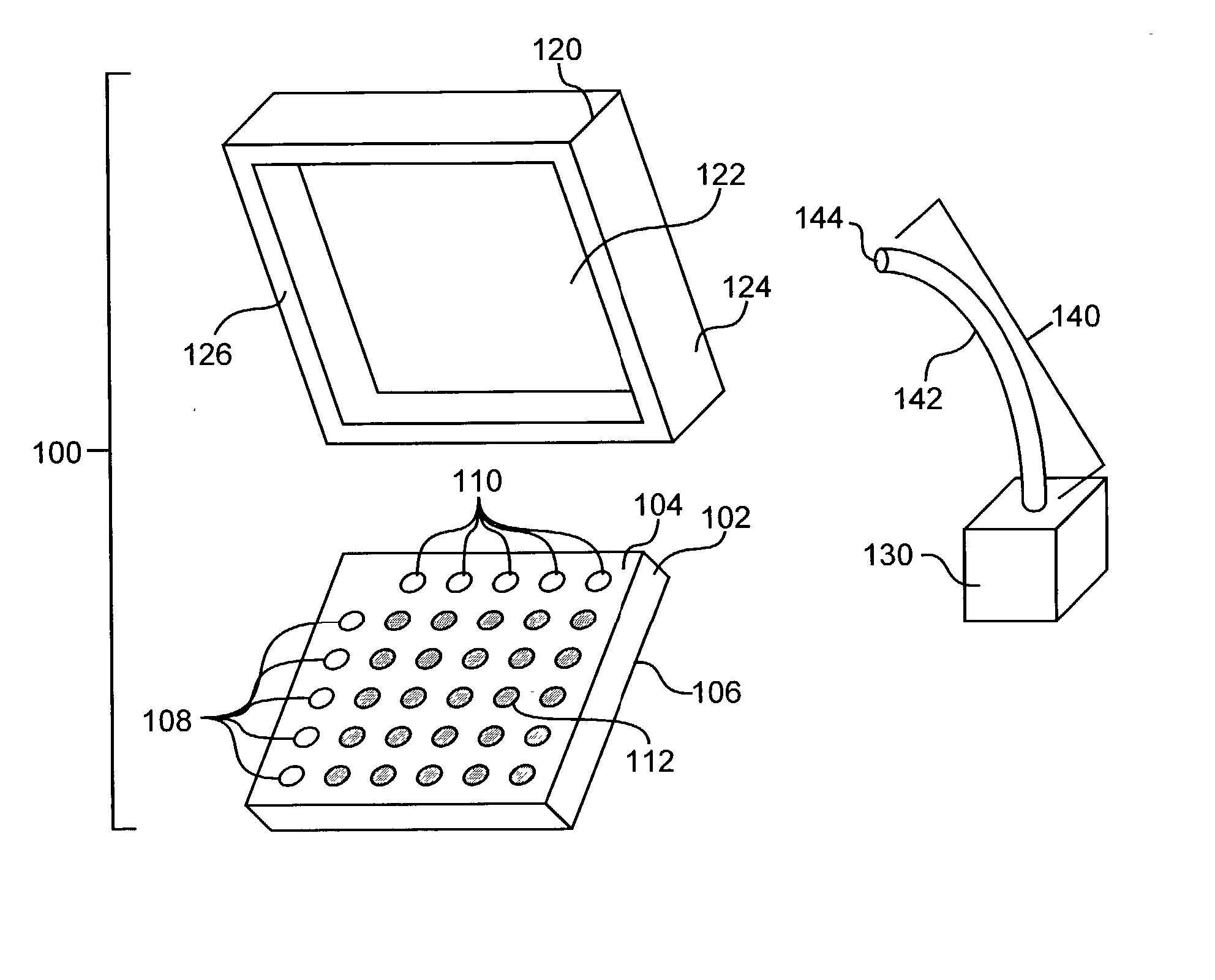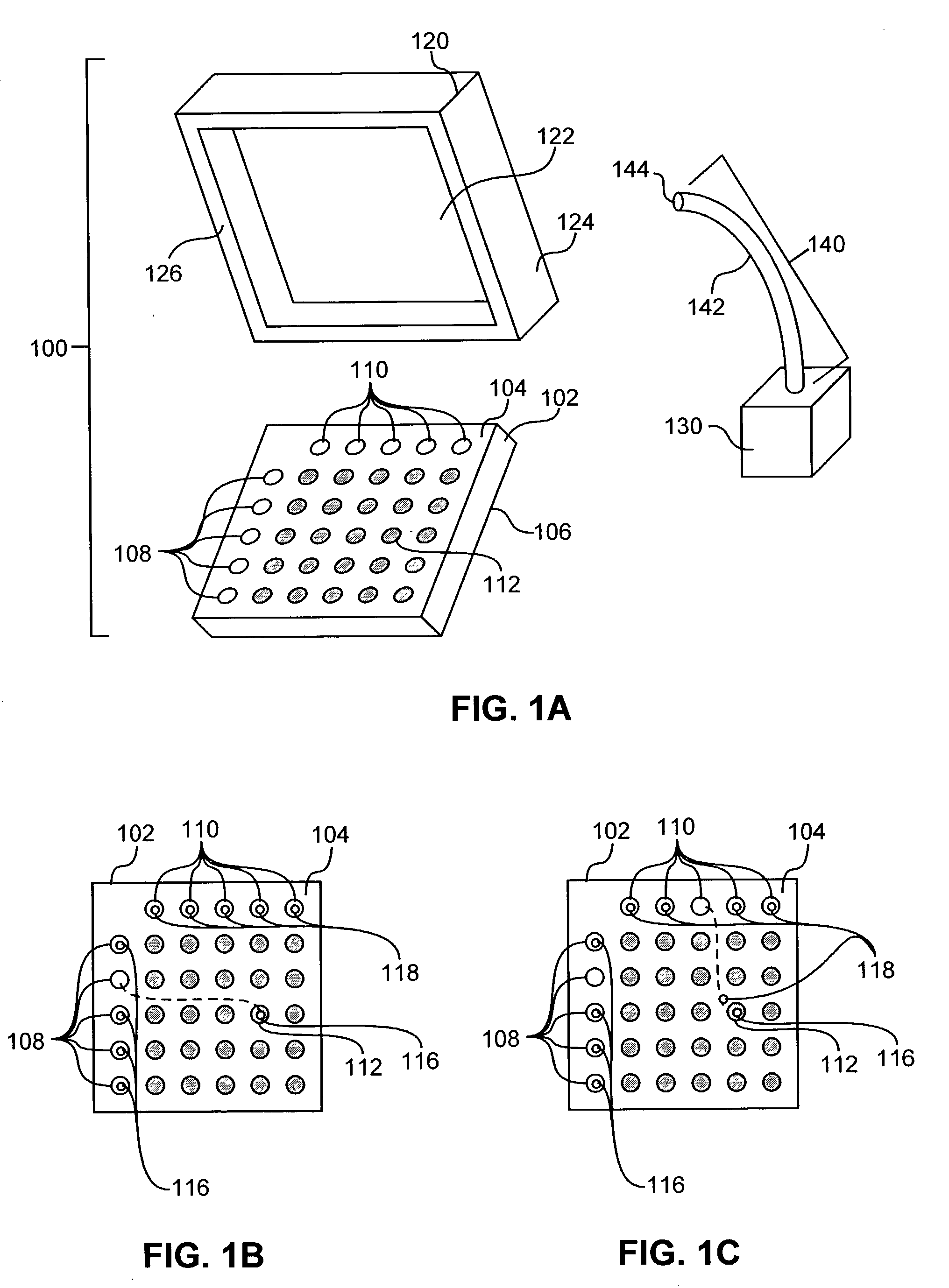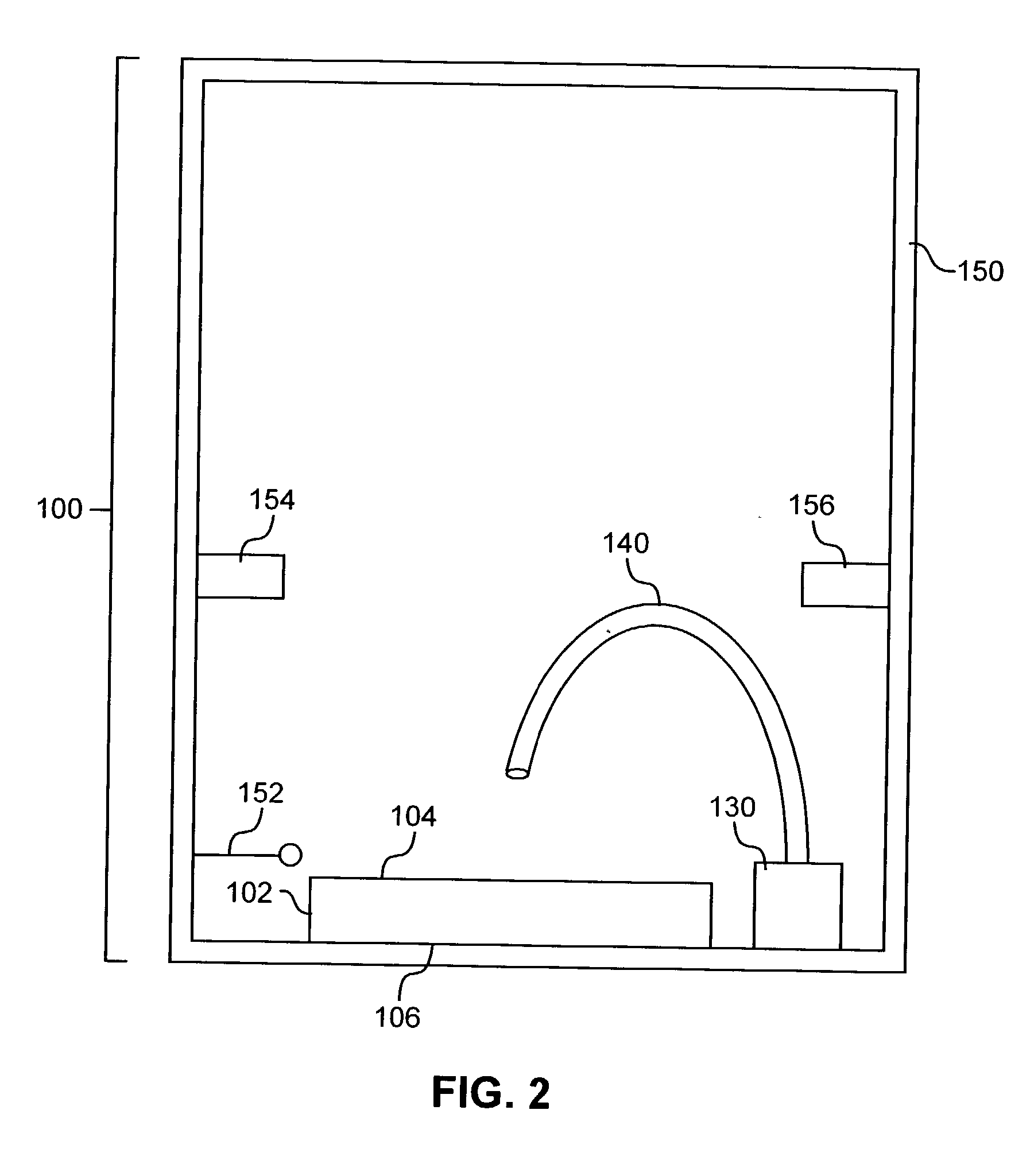Optical microfluidic devices and methods
a microfluidic device and optical technology, applied in the direction of optical radiation measurement, electrodialysis, isotope separation, etc., can solve the problems of extended time frames, large number of samples processed at high speed, and often limited progress
- Summary
- Abstract
- Description
- Claims
- Application Information
AI Technical Summary
Benefits of technology
Problems solved by technology
Method used
Image
Examples
Embodiment Construction
[0026] Before the invention is described in detail, it is to be understood that unless otherwise indicated, this invention is not limited to particular materials, components, or manufacturing processes, as such may vary. It is also to be understood that the terminology used herein is for purposes of describing particular embodiments only, and is not intended to be limiting.
[0027] It must be noted that, as used in the specification and the appended claims, the singular forms "a," "an," and "the" include plural referents unless the context clearly dictates otherwise. Thus, for example, reference to "a droplet" includes a single droplet as well as a plurality of droplets, reference to "a wavelength" includes a single wavelength as well as a plurality or range of wavelengths, reference to "a feature" includes one or more features, and the like.
[0028] In this specification and in the claims that follow, reference is made to a number of terms as defined to have the following meanings:
[002...
PUM
| Property | Measurement | Unit |
|---|---|---|
| contact angle | aaaaa | aaaaa |
| contact angle | aaaaa | aaaaa |
| contact angle | aaaaa | aaaaa |
Abstract
Description
Claims
Application Information
 Login to View More
Login to View More - R&D
- Intellectual Property
- Life Sciences
- Materials
- Tech Scout
- Unparalleled Data Quality
- Higher Quality Content
- 60% Fewer Hallucinations
Browse by: Latest US Patents, China's latest patents, Technical Efficacy Thesaurus, Application Domain, Technology Topic, Popular Technical Reports.
© 2025 PatSnap. All rights reserved.Legal|Privacy policy|Modern Slavery Act Transparency Statement|Sitemap|About US| Contact US: help@patsnap.com



